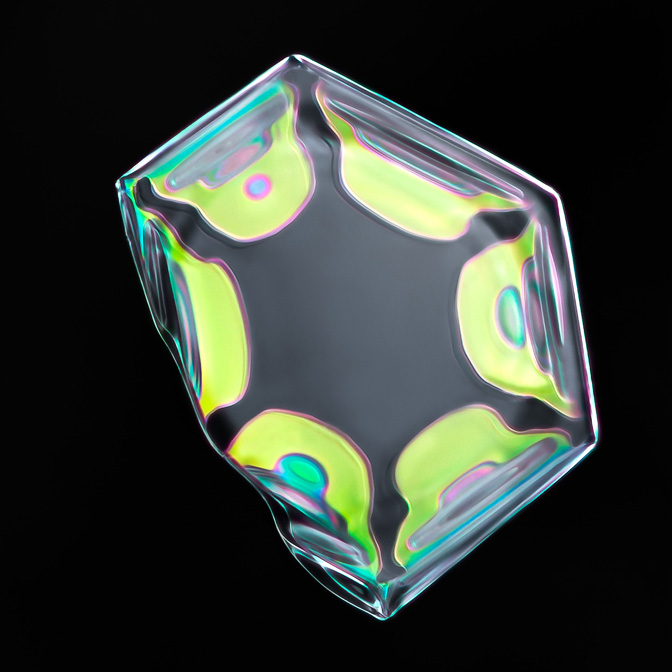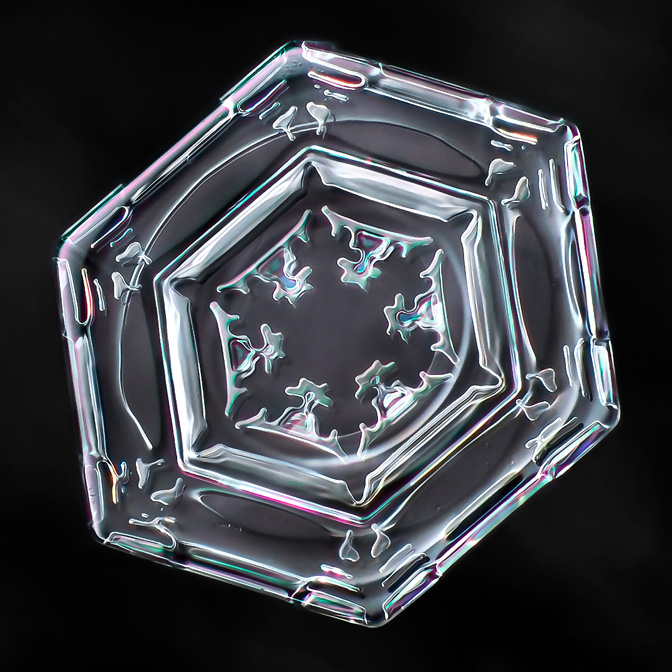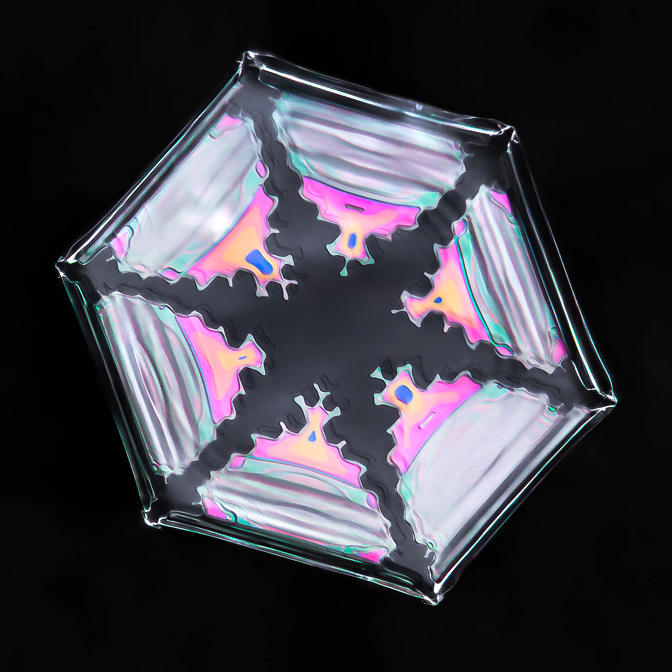With a near-infinite combination of molecules, you will never find two snowflakes completely alike. Even laboratory experiments to create two identical snowflakes result in differences between the two, like identical twins having different fingerprints.
This means that every snowflake has its own unique charm, and some have incredibly ornate features and vibrant colors.
The colors in some snowflakes appear unreal, impossible, and beyond explanation, but their origin is fairly simple, and we see the same effect every day in soap bubbles and oil spots. All we need is a bubble in the ice at exactly the right thickness.
Just as some parts of a snowflake grow faster, other parts grow more slowly. Corners typically grow the fastest, but the edges of a facet will grow more quickly than the center. If the edges of a snowflake grow more rapidly than the center of the same side, a small cavity is formed inside the ice. This expansion can create all sorts of intricate internal patterns that appear brighter since there are now more reflective layers of ice to bounce light back to the camera.
The thickness of the bubble, in turn, defines the thickness of the ice on either side of it. If the top layer of ice is thin enough, we can see a phenomenon known as “thin film interference” take shape. Imagine that some light bounces directly off the surface of the snowflake, but a percentage of light enters the ice and reflects off the inner ice/air boundary created by the bubble. We now have two rays of light that have bounced off the snowflake and are heading toward the camera! This is why bubbles appear brighter inside a snowflake, but there is something else at play.




